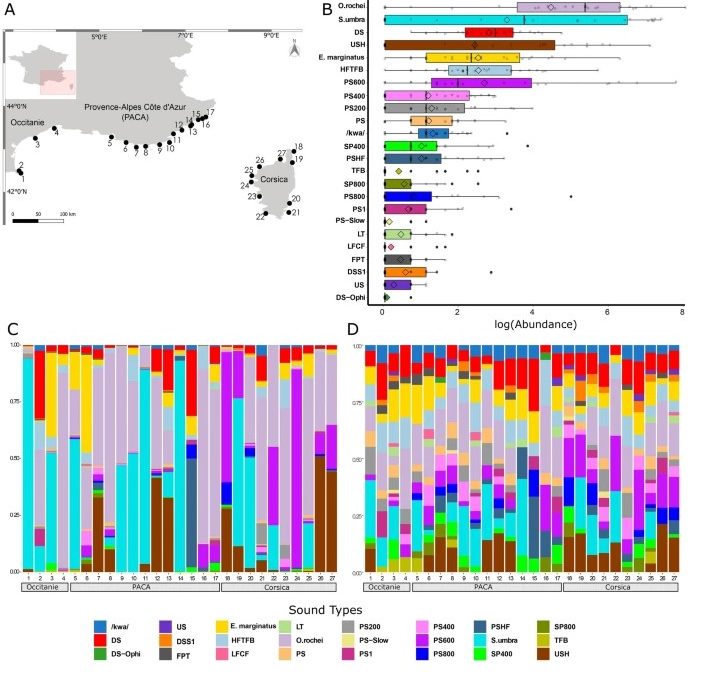Lier Son et Biodiversité marine -> 1ere publication mêlant les résultats des réseaux de surveillance CALME et RECOR !
« Biogeography of acoustic biodiversity of NW Mediterranean coralligenous reefs par Di Iorio, Audax, Deter, Holon, Lossent, Gervaise, Boissery vient de paraitre dans Scientific Reports en Open Access »
Abstract :
Monitoring the biodiversity of key habitats and understanding the drivers across spatial scales is essential for preserving ecosystem functions and associated services. Coralligenous reefs are threatened marine biodiversity hotspots that are challenging to monitor. As fish sounds reflect biodiversity in other habitats, we unveiled the biogeography of coralligenous reef sounds across the north-western Mediterranean using data from 27 sites covering 2000 km and 3 regions over a 3-year period. We assessed how acoustic biodiversity is related to habitat parameters and environmental status. We identified 28 putative fish sound types, which is up to four times as many as recorded in other Mediterranean habitats. 40% of these sounds are not found in other coastal habitats, thus strongly related to coralligenous reefs. Acoustic diversity differed between geographical regions. Ubiquitous sound types were identified, including sounds from top-predator species and others that were more specifically related to the presence of ecosystem engineers (red coral, gorgonians), which are key players in maintaining habitat function. The main determinants of acoustic community composition were depth and percentage coverage of coralligenous outcrops, suggesting that fish-related acoustic communities exhibit bathymetric stratification and are related to benthic reef assemblages. Multivariate analysis also revealed that acoustic communities can reflect different environmental states. This study presents the first large-scale map of acoustic fish biodiversity providing insights into the ichthyofauna that is otherwise difficult to assess because of reduced diving times. It also highlights the potential of passive acoustics in providing new aspects of the correlates of biogeographical patterns of this emblematic habitat relevant for monitoring and conservation.


